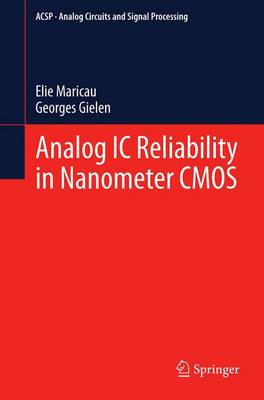Analog Circuits and Signal Processing
3 total works
This book focuses on modeling, simulation and analysis of analog circuit aging. First, all important nanometer CMOS physical effects resulting in circuit unreliability are reviewed. Then, transistor aging compact models for circuit simulation are discussed and several methods for efficient circuit reliability simulation are explained and compared. Ultimately, the impact of transistor aging on analog circuits is studied. Aging-resilient and aging-immune circuits are identified and the impact of technology scaling is discussed.
The models and simulation techniques described in the book are intended as an aid for device engineers, circuit designers and the EDA community to understand and to mitigate the impact of aging effects on nanometer CMOS ICs.
RF Power Amplifiers for Mobile Communications
by Patrick Reynaert and Michiel Steyaert
This book tackles both high efficiency and high linearity power amplifier (PA) design in low-voltage CMOS. With its emphasis on theory, design and implementation, the book offers a guide for those actively involved in the design of fully integrated CMOS wireless transceivers. Offering mathematical background, as well as intuitive insight, the book is essential reading for RF design engineers and researchers and is also suitable as a text book.

